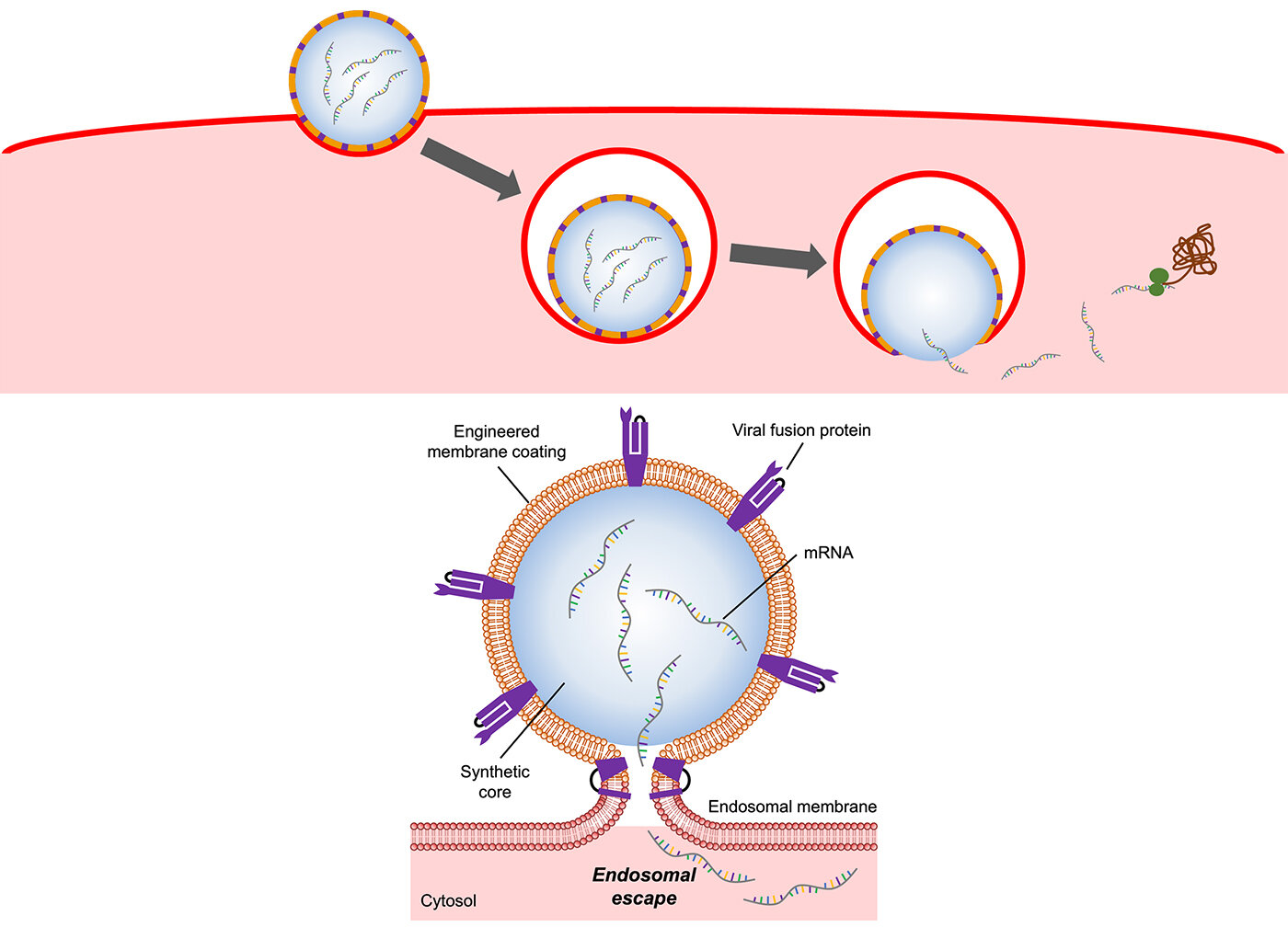Flu virus shells could improve delivery of mRNA into cells
Date: 1.12.2021
Nanoengineers at the University of California San Diego have developed a new and potentially more effective way to deliver messenger RNA (mRNA) into cells. Their approach involves packing mRNA inside nanoparticles that mimic the flu virus – a naturally efficient vehicle for delivering genetic material such as RNA inside cells.
 The work addresses a major challenge in the field of drug delivery: Getting large biological drug molecules safely into cells and protecting them from organelles called endosomes. These tiny acid-filled bubbles inside the cell serve as barriers that trap and digest large molecules that try to enter. In order for biological therapeutics to do their job once they are inside the cell, they need a way to escape the endosomes.
The work addresses a major challenge in the field of drug delivery: Getting large biological drug molecules safely into cells and protecting them from organelles called endosomes. These tiny acid-filled bubbles inside the cell serve as barriers that trap and digest large molecules that try to enter. In order for biological therapeutics to do their job once they are inside the cell, they need a way to escape the endosomes.
"Current mRNA delivery methods do not have very effective endosomal escape mechanisms, so the amount of mRNA that actually gets released into cells and shows effect is very low. The majority of them are wasted when they get administered," said senior author Liangfang Zhang, a professor of nanoengineering at the UC San Diego Jacobs School of Engineering.
Achieving efficient endosomal escape would be a game changer for mRNA vaccines and therapies, explained Zhang. "If you can get more mRNA into cells, this means you can take a much lower dose of an mRNA vaccine, and this could reduce side effects while achieving the same efficacy." It could also improve delivery of small interfering RNA (siRNA) into cells, which is used in some forms of gene therapy.























